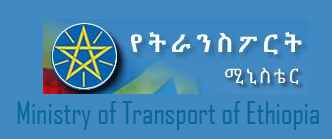The Infrastructure Gap
This picture of young men trying to cross over a bridge that is broken is taken by a national geographic historian. Ethiopia is a predominantly rural country. Addis Ababa, which is in the middle of the country, is by far the largest urban center. Population and agricultural activity are concentrated in the central and northern areas of the country, and the far south and east are only sparsely inhabited. Ethiopia’s infrastructure backbone of development tends to be centered in Addis Ababa and to spread from there outward. The least developed infrastructure links are those to the southeast of the capital. Ethiopia’s infrastructure networks are largely isolated from those of neighboring countries. On the transport side, a reasonable road corridor from Addis Ababa to neighboring Djibouti provides access to landlocked Ethiopia’s major port. There is also a rail corridor, although it is currently idle. Otherwise, Ethiopia’s infrastructure networks provide no meaningful connectivity with neighboring Kenya, Uganda, Sudan, and Eritrea.
Infrastructure contributed 0.6 percentage points to Ethiopia's annual per capita GDP growth over the last decade. Raising the country's infrastructure endowment to that of the region's middle-income countries could add an additional 3 percentage points to infrastructure's contribution to growth. Ethiopia's infrastructure successes include developing Ethiopian Airlines, a leading regional carrier; upgrading its network of trunk roads; and rapidly expanding access to water and sanitation. The transport sector faces the challenges of low levels of rural accessibility and inadequate road maintenance. The length of the trunk network is more than adequate. Ethiopia’s road density indicators look relatively low by some standards, but the trunk network provides basic regional and national connectivity. It links the capital to the coast as well as the international border crossings and the internal provincial capitals. In recent years, Ethiopia has dedicated three percent of GDP to road investments. This is one of the highest shares in Africa, although the absolute value of this spending (approximately $5 per capita annually) is comparable to what other East African countries are investing. The investment program focuses mainly on rehabilitation, upgrading, and widening of the trunk network. These efforts have brought the quality of Ethiopia’s trunk network level with other low-income countries in Africa: 88 percent of the paved network and 60 percent of the unpaved network is in good or fair condition.
According to a GIS-based analysis, only 35 percent of Ethiopia’s rural population lives within two kilometers of an all-weather road.

Belay Nera
Civil Engineer & Phd Candidate
Rural road accessibility is very low in Ethiopia. According to a GIS-based analysis, only 35 percent of Ethiopia’s rural population lives within two kilometers of an all-weather road. This is only half of the benchmark level for low-income countries in Sub-Saharan Africa. Since as much as 76 percent of Ethiopia’s population lives in rural areas, this is a high degree of isolation. The broad dispersion of the rural population makes it particularly challenging for the country to remedy this situation. It is estimated that placing the entire rural population within two kilometers of an all-weather road would entail tripling the length of the classified road network, a much higher level of effort than would be involved in most other neighboring countries. The government of Ethiopia plans a major investment program to upgrade the rural road network once work on the trunk network has been completed. In rolling out this program, it will be important to prioritize areas with high agricultural potential to improve food security. There is a huge challenge to find a systematic way to work together on planning, designing, and operation of these systems. Bridging Ethiopia is organizing professionals who have the expertise in these areas to fill the gap.
Useful information
- Category Download: Hydraulics Library - Useful Links
- General Hydrology AASHTO
- Floodplains ASU Company
- Update Date 01 March, 2020
- Project URL
- Global ihs Standards
- TRB Standards
- FHWA Standard
- MODAT Standard
- AASH Standard
- ASTM Standard
- ASCE Standard
- PCi Standard
- Visit Website















